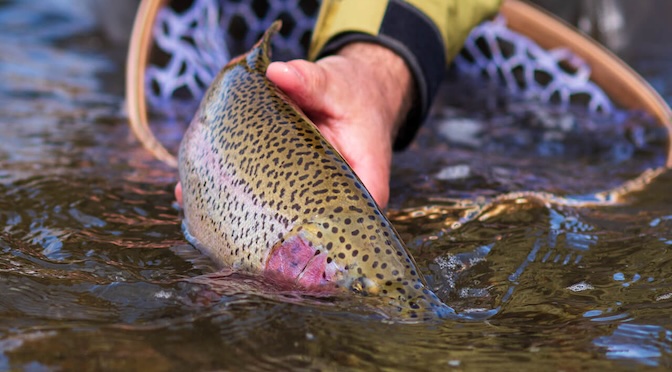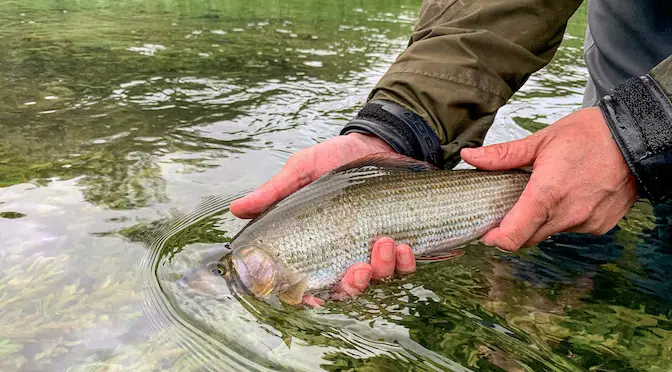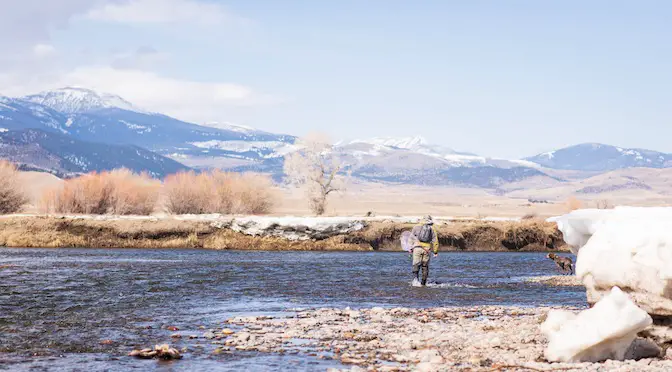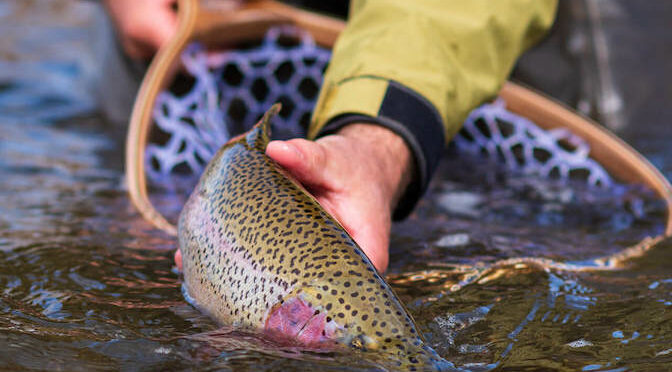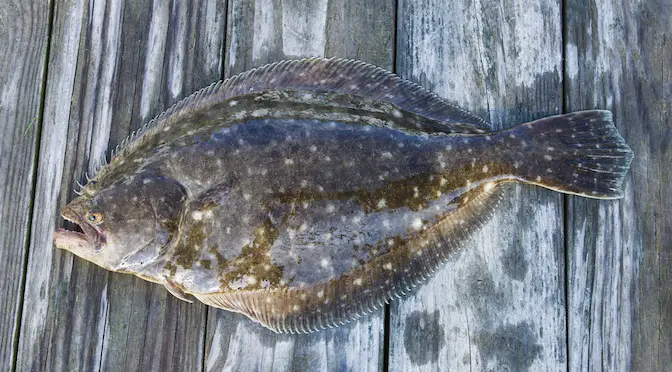- Wading Wisdom #13 – Simon Gawesworth - July 7, 2025
- On the Water with the Korkers Bantam Lite - June 26, 2025
- How to Find Trout in Rivers & Streams Anywhere - June 13, 2025
Fly fishing is a dance between angler and water.
And having the right gear can make all the difference. When it comes to waders, the choice between chest waders and hip waders is a critical decision that has consequences on your comfort, mobility, and overall fishing experience. In this guide, we’ll explore the use cases, advantages, and drawbacks of both wader variants, helping you make an informed decision tailored to your fishing style.
Chest Waders: Immersive Versatility
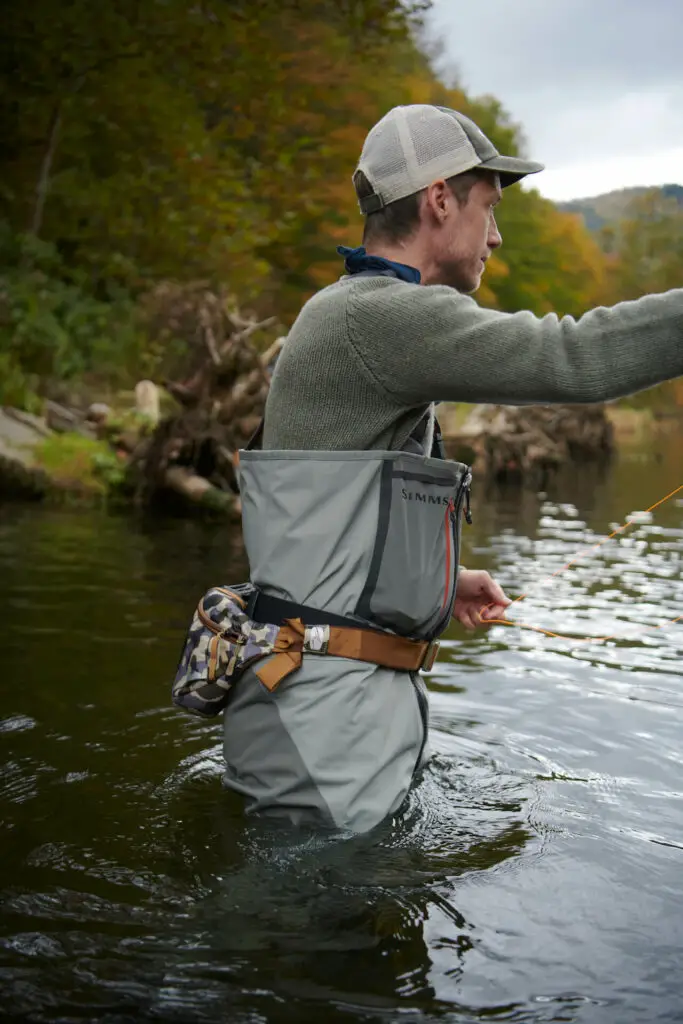
Casting a Wider Net: Chest waders, as the name suggests, cover the angler’s chest, providing complete immersion in the water. This design is ideal for scenarios where deeper wading is necessary, such as navigating through swift currents or fishing in deeper pools. If you want to target species residing in varied water depths often find chest waders indispensable. Personally, I am a big fan of chest waders for this increased degree of flexibility and only go for wading pants when it gets really warm. Pro tip: if you wan the best of both worlds, you can consider getting a pair of convertible chest waders that you can (as the name suggests) turn into hip waders, for example the Patagonia Swiftcurrent.
Maximum Protection: The extended coverage of chest waders ensures that water is kept at bay, offering not only a dry fishing experience but also protection against the elements. Whether you’re facing chilly temperatures or pushing through overgrown riverbanks, chest waders act as a barrier against splashes and potential discomfort. Plus, what I’ve found over the years they also protect you from ticks when you walk through bushes to get to the water you want to fish.
Versatility in Environments: From large rivers to expansive lakes, chest waders shine in diverse fishing environments. Their ability to provide full-body coverage makes them suitable for different terrains, offering anglers the flexibility to adapt to changing fishing conditions.
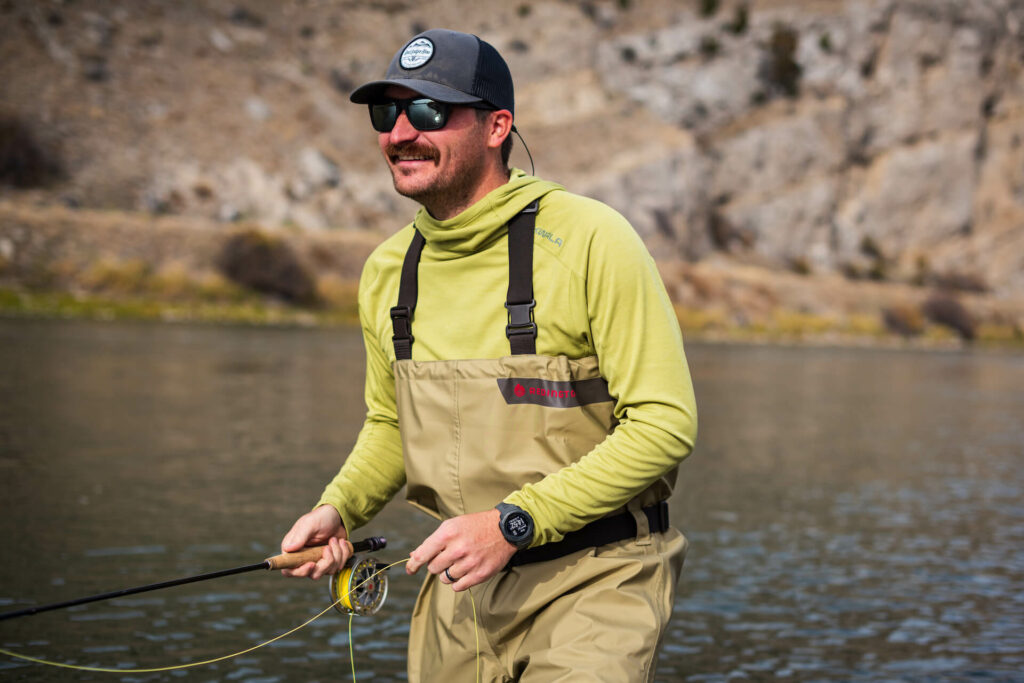
Strengths and Weaknesses of Chest Waders
PROS:
-
Full Immersion: Provides complete coverage, allowing anglers to wade in deeper waters.
-
All-Weather Friend: Offers excellent protection against the elements, making them suitable for various weather conditions.
-
Versatile Terrain: Well-suited for different fishing environments, from rivers to lakes.
CONS:
-
Bulkier Design: The extended coverage can limit mobility, especially in shallower waters.
-
Overheating: In warmer weather, chest waders may lead to overheating due to their full-body coverage.
Hip Waders: Streamlined Simplicity
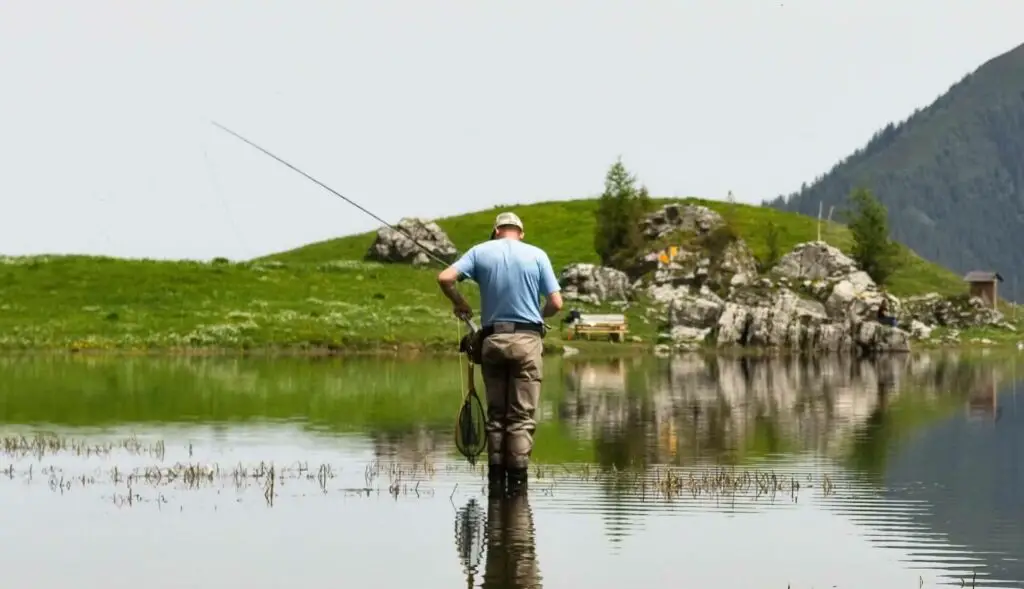
Swift and Shallow Waters: For shallower waters and instances where deep wading isn’t necessary, hip waders step into the spotlight. These waders cover the angler from the hip down, providing ample protection for traversing streambeds, small rivers, and flats. Their streamlined design allows for greater agility, making them a preferred choice in situations where flexibility is key.
Light and Agile: Hip waders are notably lighter and less restrictive than their chest-high counterparts. This makes them an excellent choice for anglers who prefer a more agile and minimalist approach, particularly when navigating through narrow channels or fishing in confined spaces.
Quick and Easy to Wear: The simplicity of hip waders means they are quick to put on and take off, offering convenience for anglers who prioritize efficiency. This can be especially beneficial when you want to move between different fishing spots or when dealing with sudden changes in weather.
Strengths and Weaknesses of Hip Waders
PROS:
-
Increased Mobility: The streamlined design allows for greater freedom of movement.
-
Lightweight: Ideal for anglers who prefer a more lightweight and less cumbersome option.
-
Quick to Wear: Convenient for situations where agility and speed are crucial.
CONS:
-
Limited Immersion: Not suitable for deep wading scenarios or fishing in waters with swift currents.
-
Less Protection: Provides less coverage, leaving the upper body exposed to splashes and elements.
FAQs: Chest Waders vs Hip Waders
Can I use chest waders in shallow waters?
While chest waders can be used in shallow waters, their design is better suited for deeper environments. In shallower situations, hip waders are often more practical.
Are hip waders suitable for cold weather?
Hip waders provide less coverage than chest waders, so they may not offer as much insulation. In colder conditions, layering appropriately is crucial.
Can I wear chest waders for extended periods?
Chest waders can become cumbersome during extended wear. Consider factors such as temperature, terrain, and personal comfort when planning long fishing sessions.
Are hip waders suitable for fly fishing in rivers with strong currents?
Hip waders are better suited for calmer waters. In rivers with strong currents, chest waders provide the necessary coverage and stability.
Can I wear chest waders in warm weather?
In warmer weather, chest waders may lead to overheating due to their full-body coverage. Consider the temperature and choose accordingly for comfort.
Our expertise: Leonard Schoenberger and his team spend countless days each year on the water, testing and reviewing the best new gear for you. Their goal is to help you learn about fly fishing and explore pros and cons of certain gear in order to make a better purchase decision and ultimately become a better fly fisherman or woman. That’s why we made this chest waders vs hip waders guide.

